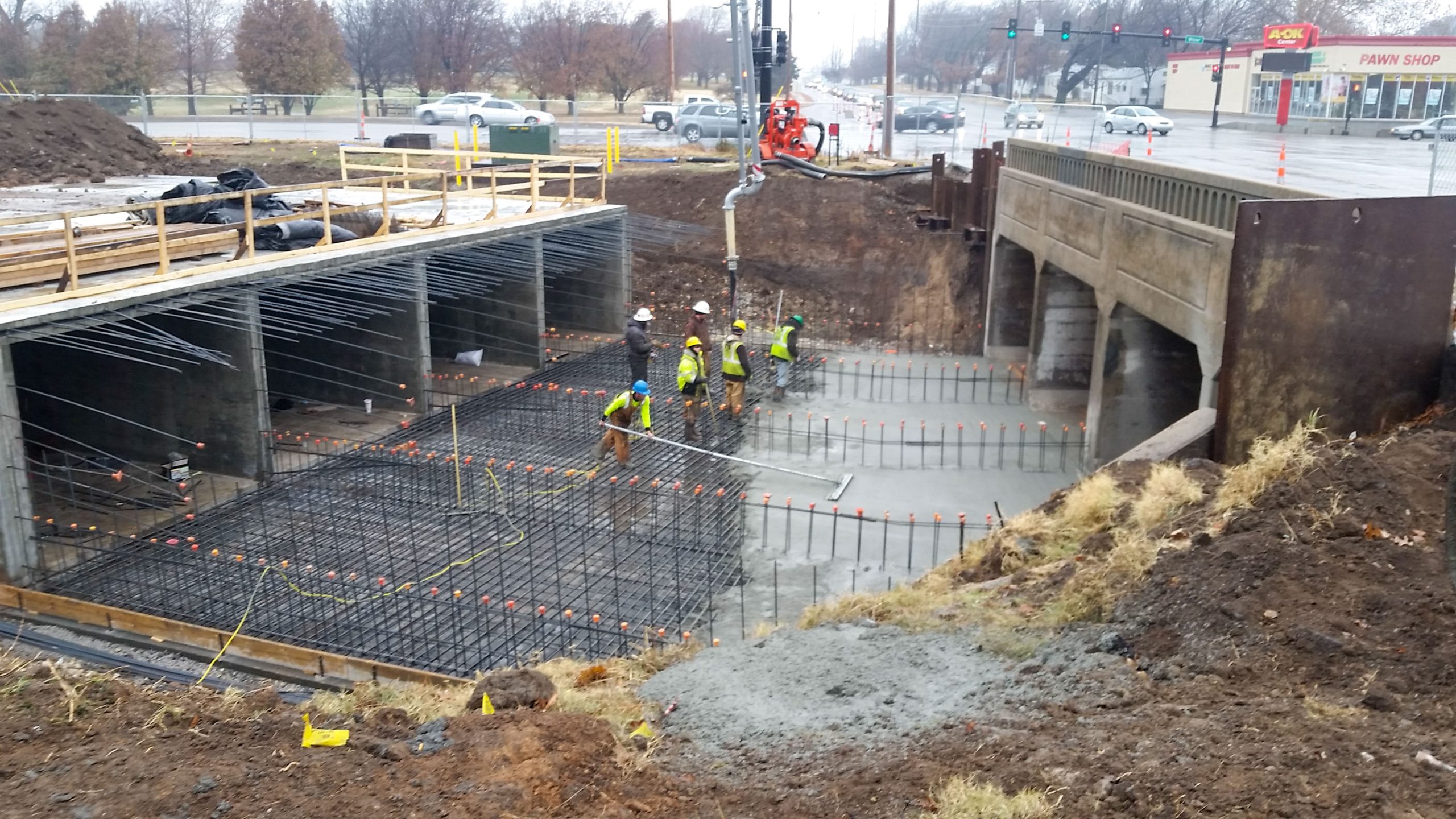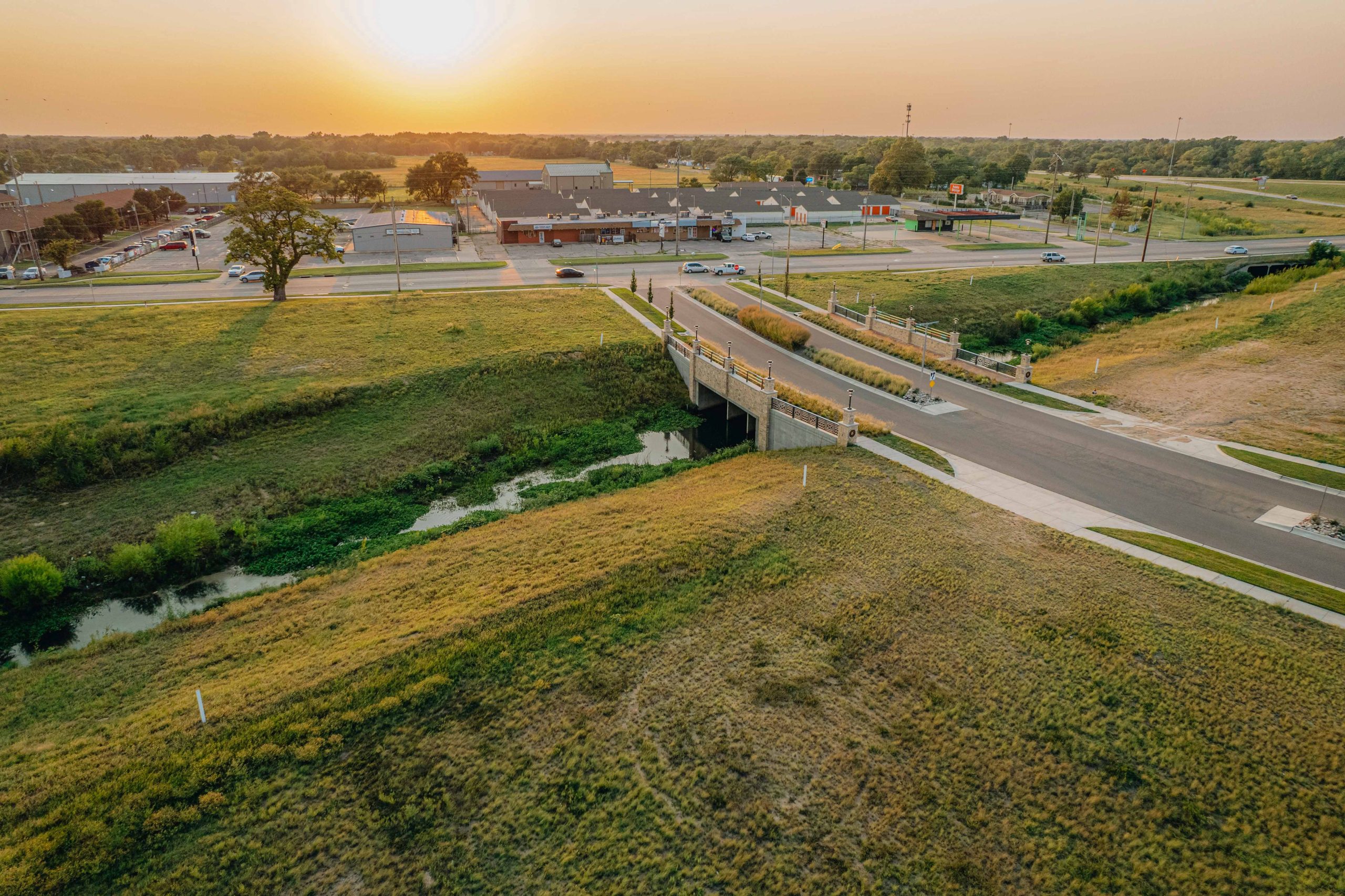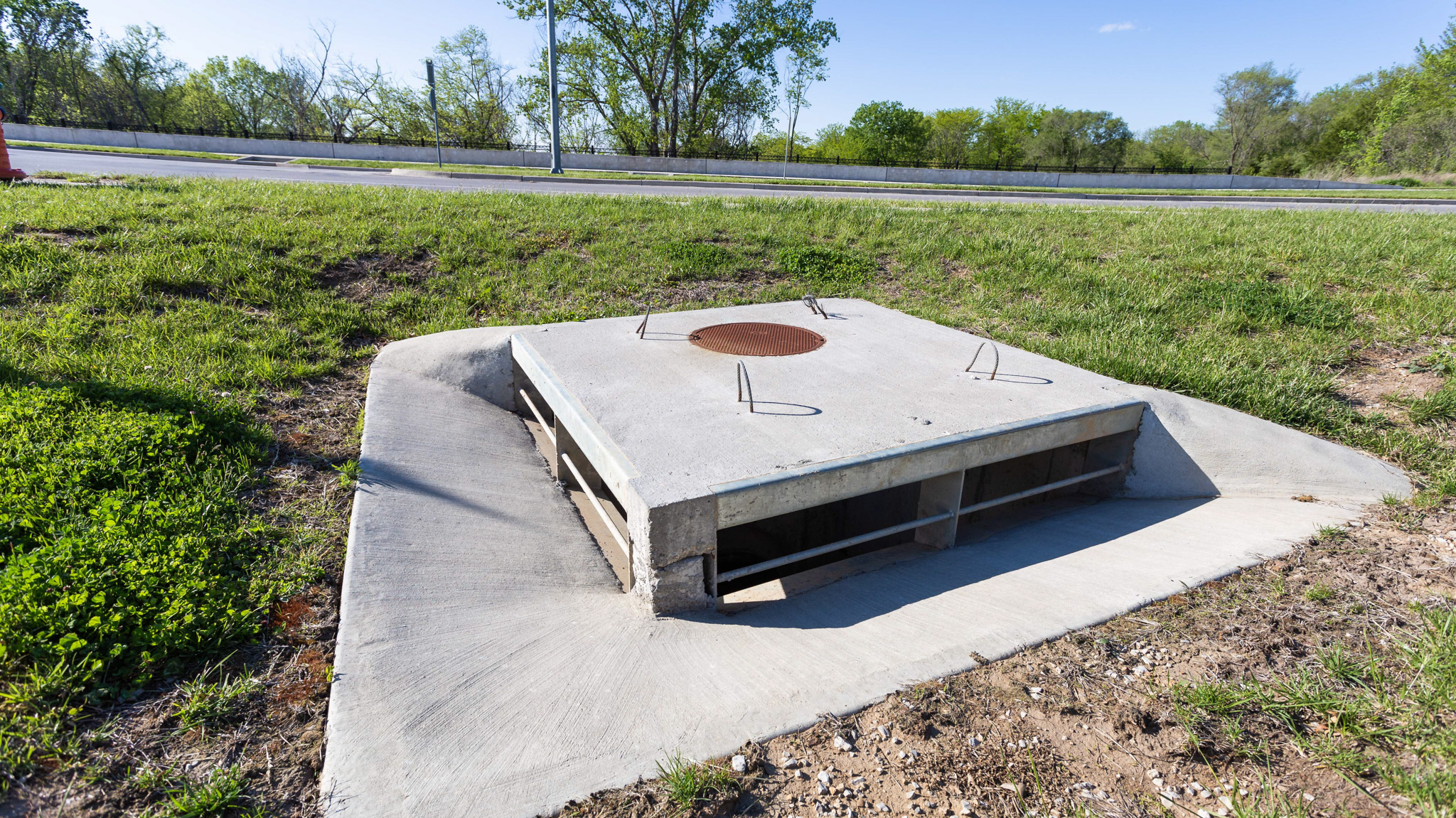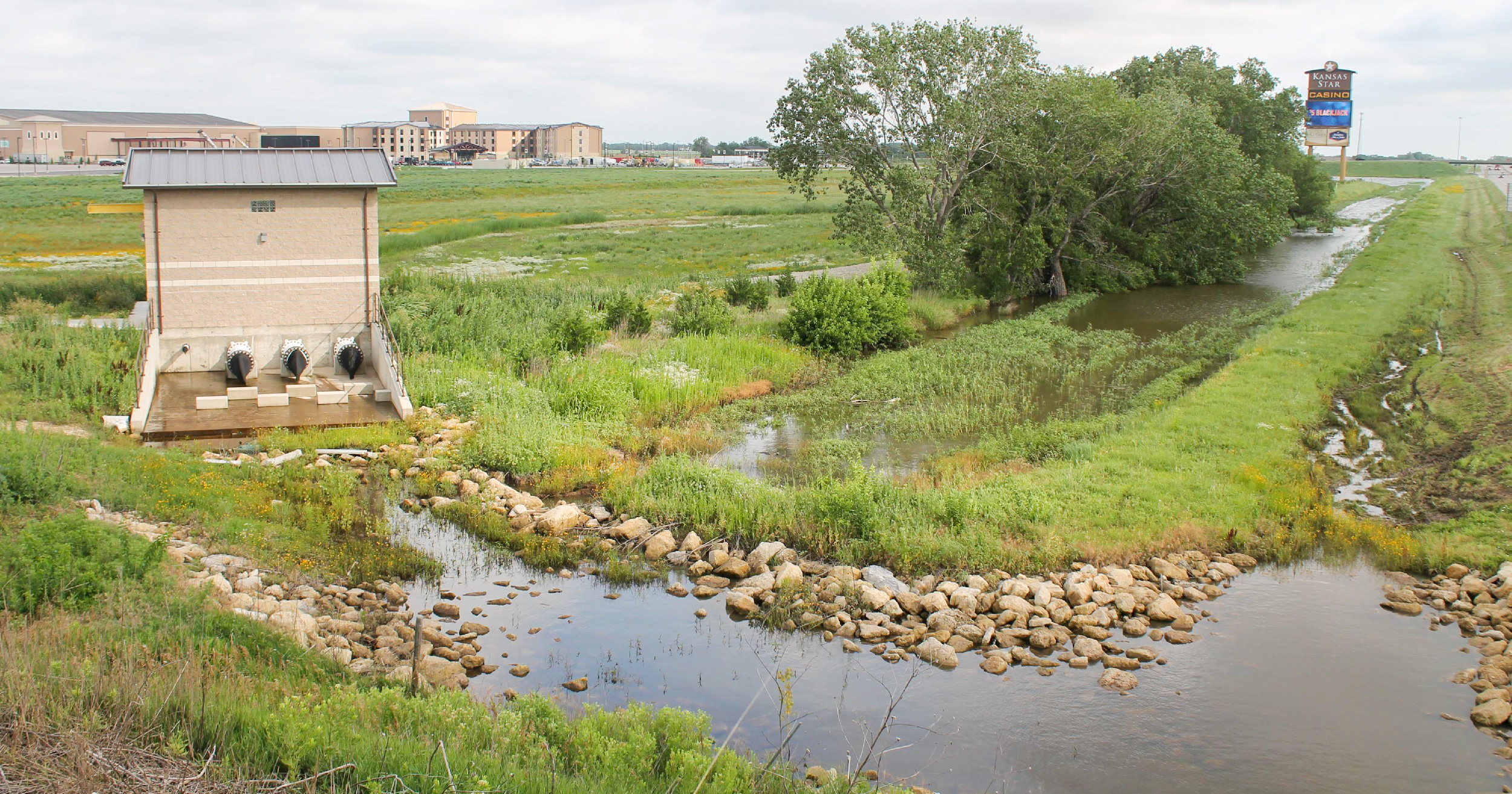
Putting the Pieces Together for Drainage Solutions
May 19, 2023
Henry Wadsworth Longfellow was right when he wrote, “Into each life some rain must fall.”
Rain is unavoidable, and it affects nearly every project we work on.
And if where that rainfall goes once it hits the ground isn’t a consideration on each project, then it can become a big problem for our clients.
“Literally, every single project we have unless it’s inside, it rains on it,” says Kara Anderson, civil engineer for MKEC. “All that rainwater has to go somewhere, and we have to find a way to deal with it whether that’s storm sewers, retention ponds or other water management options.”
The importance of drainage
“No one ever wants to spend money on drainage,” Anderson says. “It’s not really something people give a lot of forethought to.”
However, taking drainage into account at the beginning of a project can save lots of headaches and money later on.
“Hopefully we’re included on the front end of a project, so we can see what it involves,” she says. “We’ve even advised clients that certain plots of land aren’t suited for drainage, and they don’t buy that property.”
Drainage isn’t just about the property where the project sits, either. When figuring out how to deal with rainfall runoff, our engineers have to consider how any increased drainage will affect surrounding properties, as well.
Many projects require a drainage report that shows the drainage impacts to the area around each project.
“Drainage reports show we took things under consideration, and that the proposed end result doesn’t have a negative impact,” Anderson says. “By documenting and proving that nothing has changed, it eases drainage conversations with the involved property owners.”
Drainage makes a positive difference
While drainage might not be the most exciting part of a project for most clients, implementing drainage solutions can make a huge difference in future costs.
“We removed a bridge over 10th Street in Wichita,” Anderson says. “A community center was in the flood plain before the removal, and the city wanted to build an addition. Because it was in the flood plain, they were going have to build an entirely separate building to expand the space.”
“However, with the bridge removal, we decreased the flow elevation, which lowered the height of the 100-year-flood flow. This will allow the City to build the addition and potentially remove up to 200 houses from the flood plain. It’s going to save those homeowners money since they no longer have to meet flood plain regulations and carry extra insurance.”
Solving the drainage puzzle
It’s impossible to predict the weather, especially in the Midwest, but our drainage engineers do their best to calculate all the scenarios that can cause drainage issues.
“We’re puzzle piecing stuff together to get to the end goal of enough water detention on the site,” says Ashton Wherry, civil engineer for MKEC. “I like the residential developments that have a lot of ponds to it, so you kind of need to figure out how the proposed site plan is actually going to drain.”

“We’re puzzle piecing stuff together to get to the end goal of enough water detention on the site.”
Ashton Wherry, Civil Engineer
Putting that puzzle together requires taking into account multiple factors.
“We’re always conscientious of drainage and making sure we do the right thing,” Anderson says. “I feel like we’ve seen a number of projects that we didn’t design, where the engineers didn’t put enough focus on drainage. It’s always a cost-benefit analysis. It’s always a balance. We always make sure we think through it.”
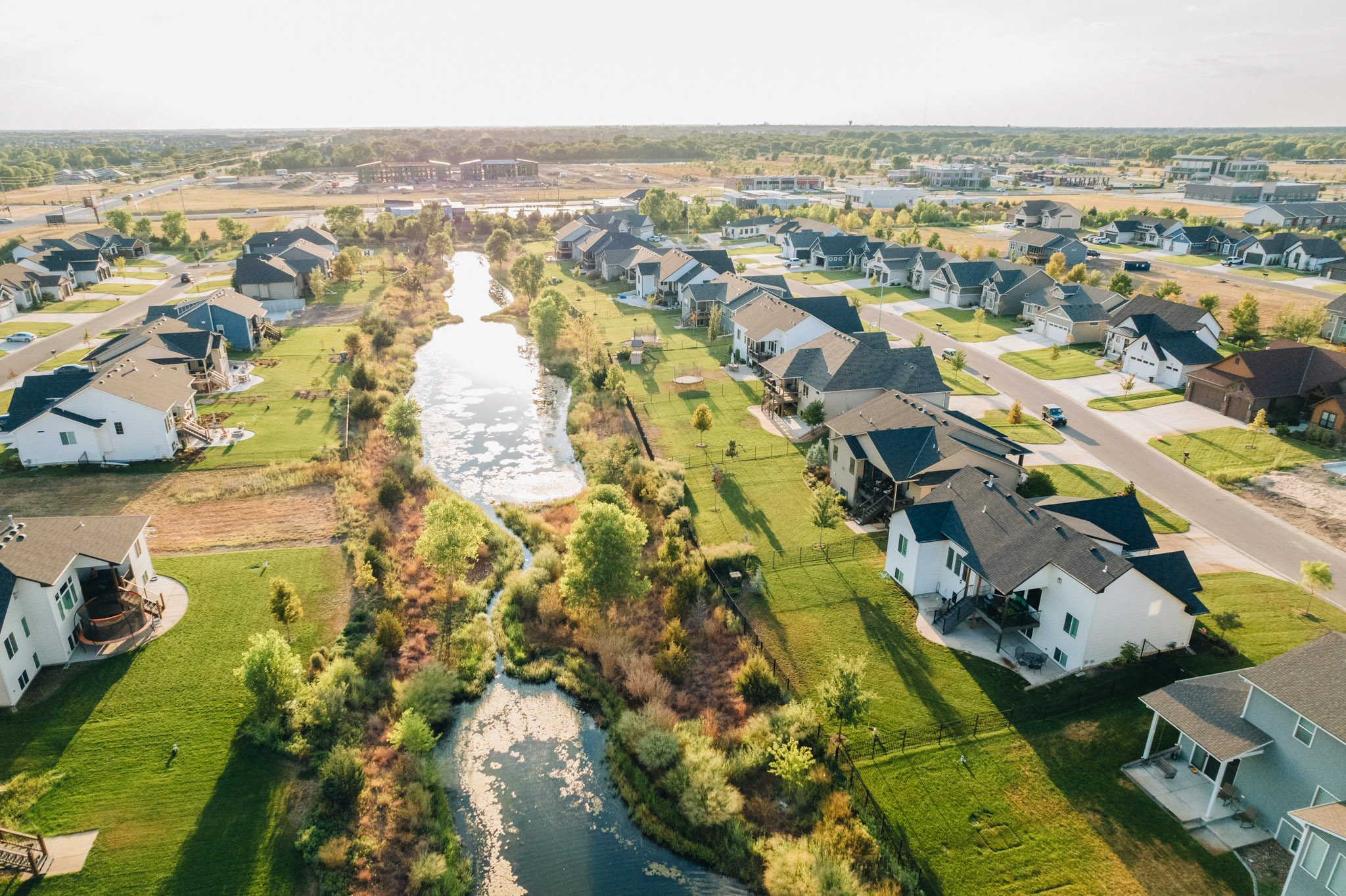
Tools for dealing with drainage
When we’re dealing with water, most of the time, multiple government agencies are involved.
“Local, state, and federal entities sometimes each have different requirements,” Anderson says. “We work a lot with FEMA and the Army Corps of Engineers. The Corps doesn’t want you to make any changes to the stream. Local doesn’t want you to flood anyone downstream, and FEMA wants modeling. Juggling all the different requirements and still meeting client goals can be tricky. Sometimes it’s challenging to explain to the client.”

“Juggling all the different requirements from multiple government agencies and still meeting client goals can be tricky.”
Kara Anderson, Civil Engineer
Despite the challenges, our reputation and dedication to providing transparent communication and using the multiple tools in our toolbox lets us solve problems before they happen, giving everyone a solution they are happy with.
The tools for creating drainage solutions include retention ponds, existing streams and rivers, and storm sewers, but sometimes we get creative to provide both a functional and aesthetically pleasing solution.
For the Kansas Star Casino project, we used the multi-discipline talents of our team to create a unique drainage solution.
“The Kansas Star Casino property has a large area that is dry detention,” Anderson says. “There’s no standing water. It’s planted in all of these native grasses and just kind of looks like an open area that’s a little bit lower in elevation. It’s actually pumped. We had to dig it down to an elevation where we could not gravity drain it out, so we worked with our other disciplines to design and install the pumps.”
Living and working in the Midwest, we know rain is inevitable, but we also know if we put the drainage puzzle pieces together correctly, drainage problems don’t have to be.
Can our drainage expertise save you time and money with a project? Partner with our engineers to design the appropriate drainage so that you can have peace of mind when it starts to rain.


